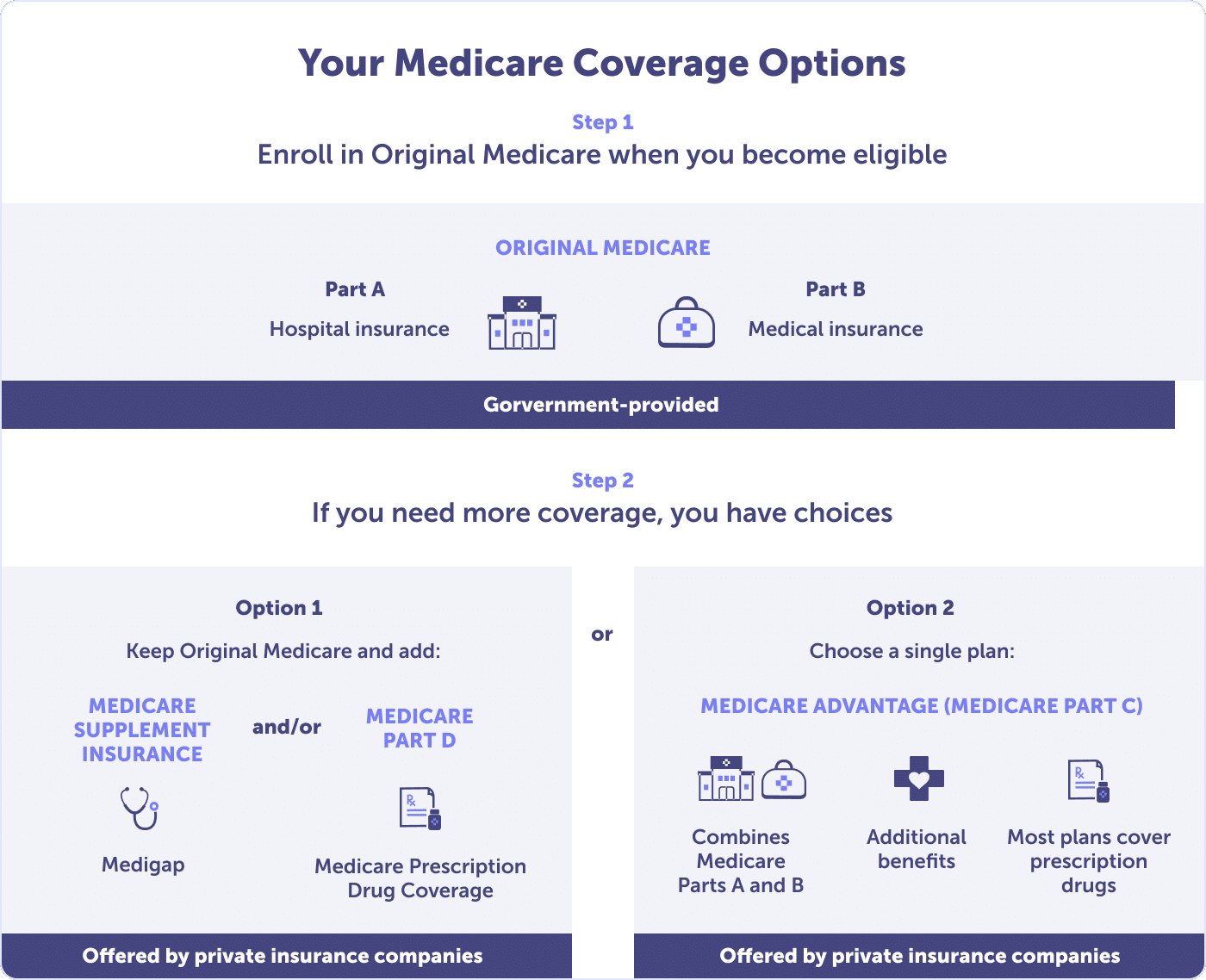Vincent Thrasher, the pioneering founder of Over65InsuranceOptions, has an impressive 20-year tenure in the insurance industry. His in-depth expertise spans the entire spectrum of senior...Read more
Medicare is a federal health insurance program that provides coverage for individuals who are 65 years of age or older, younger individuals with certain disabilities, and those with end-stage renal disease. However, navigating through the application process can be daunting, especially for those residing in Texas. In this article, we’ll guide you through the steps of applying for Medicare in Texas, ensuring that you receive the health care coverage you need and deserve.
As a Texan, it is essential to understand the nuances of applying for Medicare in your state. From eligibility requirements to enrollment periods, there are several factors to consider when applying for benefits. This article will serve as your comprehensive guide to Medicare in Texas, providing you with all the information you need to make informed decisions about your health care coverage.
- Visit the Social Security website and create an account or visit your local Social Security office.
- Complete the Medicare application form and submit it along with any required documents.
- Wait for your Medicare card to arrive. It should arrive in the mail within a few weeks.

Applying for Medicare in Texas: A Guide
Medicare is a federal health insurance program that provides coverage to individuals who are 65 years or older, or who have a qualifying disability. If you reside in Texas, and you are looking to apply for Medicare, there are a few steps you need to take to ensure you get the coverage you need. Here are the steps to follow:
Step 1: Determine Your Eligibility for Medicare
The first step in applying for Medicare in Texas is to determine your eligibility. You can become eligible for Medicare if you are 65 years or older, or if you have a qualifying disability. You can also be eligible for Medicare if you have End-Stage Renal Disease (ESRD) or Amyotrophic Lateral Sclerosis (ALS).
If you are unsure whether you are eligible for Medicare, you can visit the Social Security Administration website to check your eligibility status.
Step 2: Choose Your Medicare Plan
Once you have determined your eligibility for Medicare, the next step is to choose a Medicare plan that suits your needs. There are four parts to Medicare: Part A, Part B, Part C, and Part D. Each part covers different aspects of healthcare, so it is important to choose the plan that covers your healthcare needs.
Here is a brief overview of each part:
– Part A: Hospital Insurance
– Part B: Medical Insurance
– Part C: Medicare Advantage
– Part D: Prescription Drug Coverage
Step 3: Enroll in Medicare
Once you have chosen your Medicare plan, the next step is to enroll in Medicare. You can enroll in Medicare online, by phone, or in person. If you are already receiving Social Security benefits, you will be automatically enrolled in Medicare.
Step 4: Understand Your Medicare Coverage
It is important to understand your Medicare coverage so that you know what services are covered and what services are not covered. Make sure you review your Medicare plan carefully to understand what is covered under each part.
Step 5: Find a Doctor or Healthcare Provider
Once you have enrolled in Medicare, the next step is to find a doctor or healthcare provider who accepts Medicare. You can use the Medicare website to find a doctor or healthcare provider in your area who accepts Medicare.
Step 6: Know Your Medicare Costs
It is important to understand your Medicare costs so that you can budget accordingly. Medicare costs include premiums, deductibles, and copayments. Make sure you review your Medicare plan carefully to understand your costs.
Step 7: Use Your Medicare Benefits
Once you have enrolled in Medicare and have found a doctor or healthcare provider, you can start using your Medicare benefits. Make sure you schedule your appointments in advance and bring your Medicare card with you to each appointment.
Step 8: Renew Your Medicare Coverage Annually
It is important to renew your Medicare coverage annually to ensure that you continue to receive the coverage you need. You will receive a notice in the mail each year reminding you to renew your coverage.
Step 9: Know Your Medicare Rights
As a Medicare beneficiary, you have certain rights and protections. Make sure you review your Medicare plan carefully to understand your rights and protections.
Step 10: Get Help with Medicare
If you have questions or need help with Medicare, there are resources available to you. You can contact the Medicare hotline, visit the Medicare website, or speak with a Medicare representative in person.
Overall, applying for Medicare in Texas can be a straightforward process if you follow these steps. By understanding your eligibility, choosing the right plan, enrolling in Medicare, finding a doctor or healthcare provider, and understanding your costs and benefits, you can get the coverage you need to stay healthy and happy.
Contents
Frequently Asked Questions
Here are some common questions about how to apply for Medicare in Texas:
1. What is Medicare?
Medicare is a federal health insurance program for people who are 65 or older, or who have certain disabilities or conditions. It is divided into four parts: Part A (hospital insurance), Part B (medical insurance), Part C (Medicare Advantage), and Part D (prescription drug coverage).
To apply for Medicare in Texas, you must be a U.S. citizen or permanent legal resident who has lived in the country for at least five years. You can apply for Medicare online, by phone, or in person at your local Social Security office.
2. When should I apply for Medicare?
You should apply for Medicare three months before you turn 65, even if you are not planning to retire. If you miss the initial enrollment period, you may have to pay a penalty for late enrollment. You can also enroll during the annual enrollment period (October 15 to December 7) or during a special enrollment period if you qualify.
If you are already receiving Social Security benefits when you turn 65, you will be automatically enrolled in Medicare Parts A and B. If you are not receiving Social Security benefits, you will need to enroll yourself.
3. How much does Medicare cost in Texas?
The cost of Medicare in Texas depends on the specific plan you choose and your income. Most people do not pay a premium for Medicare Part A, but they do pay a monthly premium for Part B. The standard premium for Part B in 2021 is $148.50 per month, but it may be higher if your income is above a certain threshold.
You may also need to pay a deductible, coinsurance, or copayment for certain services. If you choose a Medicare Advantage plan or a Medicare Part D plan, you will pay a separate premium for those plans.
4. What is Medicare Advantage?
Medicare Advantage is an alternative to traditional Medicare that is offered by private insurance companies. Medicare Advantage plans provide all the same benefits as Medicare Parts A and B, and may also include additional benefits such as dental, vision, and hearing coverage.
When you enroll in a Medicare Advantage plan, you will still pay the Part B premium, and you may also pay an additional premium for the plan. You will also be subject to the plan’s network of providers and rules for obtaining care.
5. How do I choose a Medicare plan in Texas?
There are many different Medicare plans available in Texas, so it’s important to do your research and choose the plan that best meets your needs. You can compare plans using the Medicare Plan Finder tool on the Medicare website, or you can work with a licensed insurance agent who can help you navigate your options.
When choosing a plan, consider factors such as cost, coverage, network of providers, and additional benefits. You should also consider any chronic conditions or medications you may have, and ensure that the plan you choose covers those services or drugs.
In conclusion, Medicare can be an excellent resource for seniors living in Texas. The program offers healthcare coverage for a variety of medical services, including doctor visits, hospital stays, and prescription drugs. To apply for Medicare in Texas, you must be 65 years of age or older, a U.S. citizen or permanent resident, and have paid into the program through payroll taxes. If you meet these requirements, you can apply online, by phone, or in person at a Social Security office.
It’s important to keep in mind that Medicare may not cover all of your healthcare costs, so you may want to consider supplemental insurance to help fill in any gaps. Additionally, you should review your coverage annually during the open enrollment period to ensure that your plan still meets your needs.
Overall, applying for and understanding Medicare can be a bit overwhelming, but with a little research and guidance, you can navigate the process and get the healthcare coverage you need. Don’t hesitate to reach out to Medicare or a licensed insurance agent for help along the way.
Vincent Thrasher, the pioneering founder of Over65InsuranceOptions, has an impressive 20-year tenure in the insurance industry. His in-depth expertise spans the entire spectrum of senior insurance, encompassing Medicare, Medigap, long-term care insurance, life insurance, and dental, vision, and hearing insurance. Vincent's unwavering passion for guiding seniors through the intricate insurance landscape and crafting customized solutions to address their individual needs has earned Over65InsuranceOptions an esteemed reputation as a dependable ally for seniors nationwide.
More Posts

